#Shell and Tube Heat Exchanger
Text
The Crucial Role of Shell and Tube Heat Exchangers in Industrial Processes
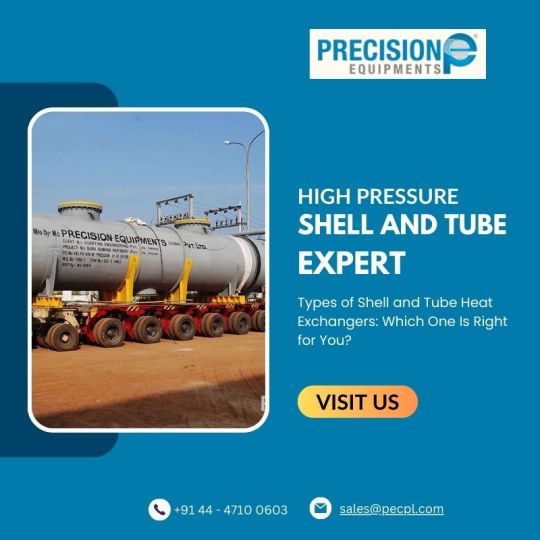
Shell and Tube Heat Exchangers are unsung heroes in industrial processes, regulating temperatures, enhancing energy efficiency, and facilitating condensation and vaporization. Precision Equipments, a leading manufacturer, provides tailored solutions for industries like Oil & Gas, Petrochemicals, and Energy. With extensive experience, high-capacity manufacturing, and a commitment to quality, Precision Equipments ensures processes run smoothly and efficiently while conserving energy. Their expertise in High-Pressure Shell and Tube Heat Exchangers makes them a trusted partner for global industrial needs.
0 notes
Text
WHAT ARE THE ADVANTAGES OF SHELL-AND-TUBE HEAT EXCHANGERS
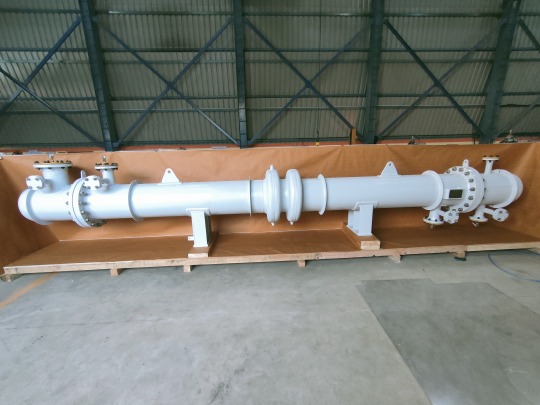
Heat exchangers are widely used in a variety of industries and their main purpose is to transfer heat from one fluid to another. In the power generation plant, in order to generate electricity, the heat exchangers transfer heat from steam to water. In the petrochemical and refining industry, heat exchangers transfer heat from one process stream to another. This helps in controlling temperature and in recovering heat.
What is a Shell and Tube Heat Exchanger?
Shell & Tube Heat exchanger consists of a cylindrical shell with a series of parallel tubes that helps in transferring thermal energy from one fluid to another. When one fluid flows through tubes, the other flows around them in the shell. A metal tube sheet separates the fluids to prevent fluid mixing, while the baffles placed inside the shell enhances the heat transfer between the fluid streams. The tube walls enable the transfer of heat from one fluid to another. Used for both heating and cooling, shell and tube heat exchanger is largely dependent on the design and the application for which it is used. Sungov Engineering is among the leading industrial heat exchange manufacturers who manufacture shell and tube heat exchangers that meet ASME Section VIII Division 1 and TEMA standards.
What is the Shell & Tube Heat Exchanger Types?
The shell and tube heat exchanger types is usually based on the configuration and design of tubes, the flow arrangements and the number of passes. Shell and tube exchangers are also built depending on the temperature requirements and corrosiveness of the fluids and based on this, various materials such as stainless steel, aluminum, copper are selected. The following lists the common types of shell and tube heat exchangers:
Single-Pass Shell and Tube Heat Exchanger: The fluid in this type flows through tubes in a single pass.
Multi-Pass Shell and Tube Heat Exchanger: The fluid flows through tubes in multiple passes thus increasing heat transfer surface. This enables the overall efficiency of the exchanger.
U-tube Heat Exchanger: The tubes in this kind of heat exchangers are bent in a U-shape. One end is in the shell, while the other in the shell outlet. One fluid runs through the tubes, and the other fluid flows over the tubes (through the shell) to transfer heat between the two fluids. This kind of heat exchangers are used in situations when one of the fluids have corrosive nature and could cause damage to the heat exchanger.
Floating-Head Heat Exchanger: This kind of shell and tube heat exchanger is built to keep one end of the tubes free in order to help them contract or expand with the change of temperature. The other end is fixed. This kind is generally used for applications that involve high-pressure.
Fixed-Tube Sheet Heat Exchanger: The tubes in this kind of heat exchanger are fixed and cannot be removed for cleaning or maintenance.
Spiral Heat Exchanger: In this type, the tubes are wound into a spiral shape, with one fluid flowing inside the tubes and the other fluid flowing outside the tubes.
Plate And Shell Heat Exchanger: This kind of heat exchanger makes use of metal plates instead of tubes. One fluid flow in between the plates, while the other outside the plates.
What are the Benefits of Shell and Tube Heat Exchangers?
The shell and tube heat exchanger benefits are as follows.
Versatility: The shell and tube heat exchangers can accommodate many fluid types including those that are viscous and corrosive. This makes this heat exchanger perfect for a wide variety of applications
Durability: Shell and tube heat exchangers are usually composed of durable and strong materials that can tolerate various conditions
Competency: The high heat transfer rate makes this a great choice in a wide variety of applications
Reduced Downtime: The shell and tube heat exchangers enable better cleaning and maintenance thereby reducing work stoppage
Cost Effective: In comparison to other heat exchangers, the shell and tube heat exchanger is a low-cost option
High Pressure Competence: With their ability to operate at high pressures, the shell and tube heat exchangers are appropriate for high-pressure applicationsScalability: Shell and tube heat exchangers are available in a range of sizes and can be easily scaled up or down to meet the changing needs of a process.
0 notes
Video
Water to water heat exchangers are responsible for exchanging heat between waste water and freshwater. The heat transfer process between the liquids does not involve direct contact or mixing of the two. If you are looking for the best quality Water Heat Exchanger then you should contact AIC Heat Exchanger - which offers Complete Heat Transfer Solutions.
#aicheatexchangers#DoubleWall#heat exchanger#water to water heat exchanger#Double Wall Heat Exchanger#shell and tube heat exchangers#brazed plate heat exchangers#Shell and Tube Heat Exchanger#Heat Exchanger Manufacturer#heat exchangers market#USA
0 notes
Link
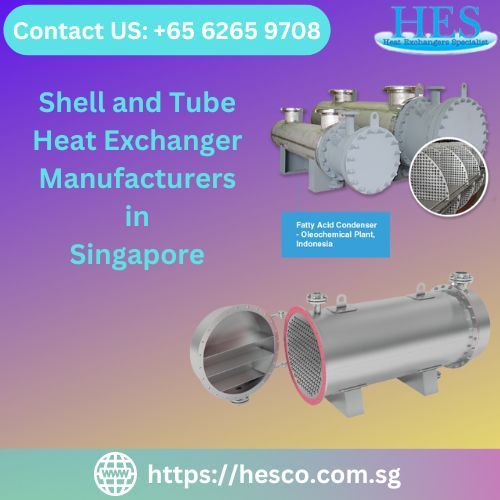
Large process plants such as refineries or petrochemical plants where the process fluid is heated or cooled by passing through tubes within a shell. The shell and Tube Heat Exchanger in Singapore are usually made of metal while the tubes are made of either metal or composite materials.
#shell and tube heat exchanger#shell and tube heat exchanger advantages#shell and tube heat exchanger manufacturers
0 notes
Text
Industrial Finned Tube Heat Exchangers: A Brief Overview
Industrial finned tube heat exchangers are often used to transfer heat from one medium, such as a hot liquid, to another. They are made of tubes that have fins on the outside which are used to increase the surface area of the tubes.
What is an Industrial Finned Tube Heat Exchanger?
Industrial finned tube heat exchangers are a type of heat exchanger that is used in industrial applications. They are made from metal and have a series of tubes that run through them. The tubes are filled with a fluid, and the heat exchanger is used to transfer heat from one fluid to another.
Some common applications for industrial finned tube heat exchangers include cooling systems in factories, food processing plants, and oil refineries. They are also used in energy production plants to cool down hot fluids.
Because they are made from metal, industrial finned tube heat exchangers are very durable. They can also handle high temperatures and pressures, which makes them ideal for industrial applications.
The Importance of Industrial Finned Tube Heat exchangers in Industry
Industrial finned tube heat exchangers are used in a variety of industrial applications, from oil refining to food processing.
The reason why these heat exchangers are so important is because they allow for the continuous transfer of heat between two different mediums. This is especially important in industries where the temperature difference between the two mediums is significant.
One of the biggest advantages of industrial finned tube heat exchangers is their ability to handle high temperatures and pressures. This makes them perfect for use in locations where there is a lot of heat or pressure being transferred.
Overall, industrial finned tube heat exchangers are an essential component of many Industrial processes.
Types of Industrial Finned Tube Heat Exchangers
Industrial finned tube heat exchangers are the most common type of exchanger in industrial applications. The design of the finned tube allows for very high flow rates with minimal pressure drop, making it an ideal choice for applications where high heat transfer rates are needed.
There are a few different types of industrial finned tube heat exchangers, each with its own advantages and disadvantages. The three most common types of industrial finned tube heat exchangers are the downdraft, countercurrent, and fluidized bed.
The downdraft type is the simplest type of exchanger and typically uses a series of downward-facing fins to increase the surface area contact between the hot and cold fluids. This increases the rate at which heat is transferred from one liquid to another, but it also results in high amounts of turbulence and drag.
The countercurrent type uses two sets of parallel fins arranged in a cross pattern across the width of the exchanger tubes. This configuration reduces turbulence and drag while still transferring heat rapidly. However, countercurrent exchangers can only be used when both fluids have similar temperatures, since they will not operate correctly if one fluid is hotter than the other.
Conclusion
In this article, we have provide a brief overview of industrial finned tube heat exchangers and their applications. We have discuss the different types of industrial finned tube heat exchangers and their uses, as well as some common problems that can arise with these devices. By reading this article, you will be able to better understand how industrial finned tube heat exchangers work and what factors affect their performance.
#heat transfer equipment#shell and tube heat exchanger#plate heat exchanger#brazed plate heat exchangers#heat exchanger#custom heat exchanger
0 notes
Text
The heat exchanger is a device used to transfer heat between two or more fluids of different temperatures. It depends upon the type of exchanger, which may be separated or in direct contact.
There are types of heat exchangers. Shell and tube heat exchanger is one of them.
#ALAQUA INC#CHEMICAL INDUSTRY#HEAT EXCHANGER EVAPORATOR#HEAT EXCHANGER MAKERS IN USA#SHELL AND TUBE HEAT EXCHANGER
0 notes
Text
#Graphite#Graphite Heat Exchanger#Graphite Condensers#Graphite Cooler#Cubic Block Graphite Heat Exchanger#Cylindrical Block Graphite Heat Exchanger#Shell & Tube Graphite Heat Exchanger#Graphite Reboilers
0 notes
Text
Shell & Tube Heat Exchanger Market Size, Share, Latest Trends, and Growth Research Report 2024-2036
A comprehensive analysis of the Shell & Tube Heat Exchanger Market Size, Share, Latest Trends, and Growth Research Report 2024-2036 provides an accurate overview and thorough analysis of the market industries in the present and the future. This report provides a comprehensive overview of the market, including current market trends, future projections, and an in-depth analysis of the major players in the industry. It provides a comprehensive overview of the market, including current market trends, future projections, and an in-depth analysis of the major players in the industry.
Request Free Sample Copy of this Report @
Report findings provide valuable insights into how businesses can capitalize on the opportunities provided by these dynamic market factors. It also provides a comprehensive overview of the major players in the industry, including their product offerings, contact and income information, and value chain optimization strategies. Furthermore, it offers an in-depth analysis of the leading businesses in the industry based solely on the strength of their business plans, product descriptions, and business strategies.
Key Findings
Shell & Tube Heat Exchanger Market has experienced significant growth in recent years, driven by factors such as increasing consumer demand and technological advancements.
The market segmentation analysis revealed several key segments, including Material, Classification and End-Use each with unique characteristics and growth potential.
Regional analysis highlighted the strong performance of Shell & Tube Heat Exchanger Market in regions such as North America, Europe, and Asia-Pacific, with emerging markets showing promising growth opportunities.
Analyzing the Shell & Tube Heat Exchanger Market
A thorough understanding of the Shell & Tube Heat Exchanger Market will provide businesses with opportunities for growth such as customer acquisition, enhancements to their services, and strategic expansions.
By incorporating market intelligence into their operations, businesses can anticipate changes in the economy, assess the effect these factors may have on their operations, and create plans to counteract any negative effects.
Market intelligence helps organizations stay ahead of the curve through insights into consumer behavior, technological advancements, and competitive dynamics.
Using Shell & Tube Heat Exchanger Market data can provide organizations with an edge in the competitive market and establish prices and customer satisfaction levels.
In a dynamic market environment, business validation helps companies develop business plans and assures their long-term survival and success.
What are the most popular areas for Shell & Tube Heat Exchanger Market?
The North American continent includes Canada, Mexico, and the United States.
The European Union is made up of the United Kingdom, France, Italy, Germany, the Republic of Turkey, and Russia.
The Asia-Pacific region is comprised of China, Japan, Korea, India, Australia, Vietnam, Thailand, Indonesia, and Malaysia.
The region of Latin America, which includes Brazil, Argentina, and Columbia
In addition to Africa, the Middle East includes South Africa, Egypt, Nigeria, Saudi Arabia and the United Arab Emirates.
Report highlights include:
There is a 360-degree synopsis of the industry in question in this study, which encompasses all aspects of the industry.
The report presents numerous pricing trends for the keyword.
Additionally, the report includes some financial data about the companies included in the competitive landscape.
The study enumerates the key regulatory norms governing the keyword market in developed and developing economies.
Additionally, the keyword report provides definitions of the market terms referred to in the document for the sake of convenience.
Future Potential
In the keyword research report, various primary and secondary sources are used to describe the methodology of conceptualizing the study. It has been discussed in the study what the scope of the report is and what elements it contains in terms of the growth spectrum of the keyword. The document also includes financial data of the companies profiled, along with the current price trends of the keyword.
Access our detailed report at@https://www.researchnester.com/reports/shell-tube-heat-exchanger-market/5819
0 notes
Text
Shell and Tube Heat Exchanger manufacturer & dealers | Goel Scientific | Canada
We Serve the Best, Long Lasting Shell and Tube Heat Exchanger, Shell and Tube Heat Exchanger Products, manufacturer, Goel Scientific Canada USA

#Best#Top#We Serve the Long Lasting Shell and Tube Heat Exchanger#Shell and Tube Heat Exchanger Products#manufacturer#Goel Scientific Canada USA
0 notes
Text
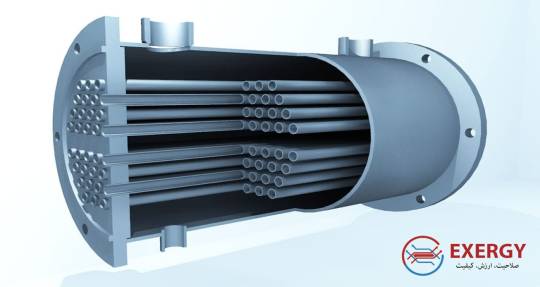
shell & tube heat exchanger
مبدل حرارتی پوسته و لوله به عنوان یک فناوری حرارتی پرکاربرد، با ساختار خاص و امکانات عالی خود در انتقال حرارت مورد توجه صنایع مختلف قرار گرفته است. بهوسیله ترکیبی از مهندسی دقیق و انتخاب مواد مناسب، این نوع مبدل حرارتی در بهینهسازی فرآیندهای حرارتی و افزایش بهرهوری تأثیر مثبت دارد.
#heat exchangers#مبدل حرارتی#مبدل حرارتی پوسته و لوله#shell & tube heat exchanger#مبدل حرارتی شل تیوب#industry
1 note
·
View note
Text
Shell and Tube Heat Exchanger: An Introduction
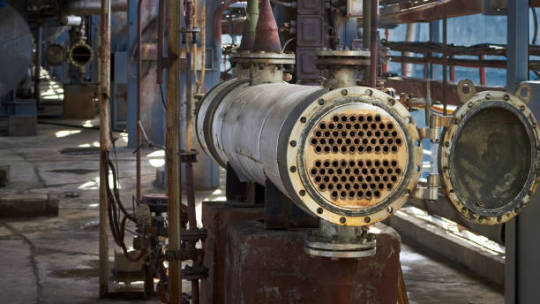
Are you familiar with the concept of a heat exchanger? It's a device that transfers thermal energy between two fluids. And if you're particularly interested in this technology, then you've likely come across Shell and Tube Heat Exchangers. These types of heat exchangers have been around for over 150 years, but they're still widely used today due to their effectiveness and reliability. If you're looking to learn more about these amazing machines, then keep reading! This blog post is your definitive guide to the fascinating world of shell and tube heat exchangers - an introduction like no other.
What is a Shell and Tube Heat Exchanger?
A shell and tube heat exchanger is a type of heat exchanger that is commonly used in industrial applications. It consists of a shell, which is a large cylindrical vessel, and a bundle of tubes that run through the shell. Heat is transferred between two fluids that flow through the shell and the tubes, respectively.
How Does a Shell and Tube Heat Exchanger Work?
In a shell and tube heat exchanger, the two fluids flow in opposite directions. The fluid that needs to be heated or cooled flows through the tubes, while the other fluid flows through the shell. As the fluids flow through the tubes and the shell, heat is transferred from one fluid to the other through the walls of the tubes.
Types of Shell and Tube Heat Exchangers
There are several types of shell and tube heat exchangers, including:
Fixed Tube Sheet Heat Exchanger: This is the simplest type of shell and tube heat exchanger, where the tube sheet is fixed and cannot be removed.
U-Tube Heat Exchanger: In this type of heat exchanger, the tube bundle is bent into a U-shape, allowing for easy maintenance and cleaning.
Floating Head Heat Exchanger: In a floating head heat exchanger, the tube bundle is removable, making it easy to clean and maintain.
Applications of Shell and Tube Heat Exchangers
Shell and tube heat exchangers are commonly used in a variety of industrial applications, including:
Chemical Processing: Shell and tube heat exchangers are commonly used in chemical processing plants to heat or cool fluids.
Oil and Gas: Shell and tube heat exchangers are used in oil refineries and gas processing plants to transfer heat between fluids.
HVAC: Shell and tube heat exchangers are used in HVAC systems to transfer heat between air and water.
Advantages of Shell and Tube Heat Exchangers
Efficient heat transfer
Can handle high-pressure applications
Can handle a wide range of fluids and temperatures
Conclusion
Why use a shell and tube heat exchanger? Shell and tube heat exchangers are an important component in many industrial applications. They provide efficient heat transfer between two fluids, making them ideal for use in chemical processing, oil and gas, and HVAC systems. While they can be expensive to manufacture and install and can be difficult to clean and maintain, the advantages of shell and tube heat exchangers make them a valuable asset in many industrial settings. So, whether you're designing a new industrial process or looking to improve an existing one, consider the benefits of a shell and tube heat exchanger.
4 notes
·
View notes
Text
Radiator Repair: Keeping Your Engine Cool with Ring Heat Exchanger
For decades, Ring Heat Exchanger has been synonymous with Ring Radiator Services, reflecting our commitment to radiators at the core of our operations. Our expertise spans radiator maintenance, repair, overhaul, and service across various applications and industries, dealing with copper, aluminum, and stainless-steel cores.
The Purpose of a Radiator
Radiators play a crucial role in the engine cooling system by dissipating excess heat from the engine block and other systems. A poorly functioning radiator can lead to engine overheating, compromising performance and potentially causing critical engine failure.
Radiator Failure Modes
Leaks: In tubes, header plates, or tank gaskets.
Mechanical damage: Caused by impacts from environmental debris or unmaintained tools.
Restricted airflow: Accumulation of dirt and debris on cooling fins.
Corrosion: Damaged radiator fins leading to reduced cooling capacity.
Coolant flow restriction: Accumulation of debris in tubes hindering efficient cooling.
What We Do
#radiator maintenance#brazed plate heat exchanger#plate and frame heat exchangers#shell and tube heat exchangers#charge air cooler repair#industrial radiators and heat exchangers#heat exchanger maintenance
0 notes
Text

Pharmaceutical Heat Exchangers
Best shell and tube heat exchanger manufacturer & supplier for chemical industry Check the price with Repicea.com and book your heat exchanger system now!
Learn more about Heat Exchangers here: https://www.repicea.com/main
0 notes